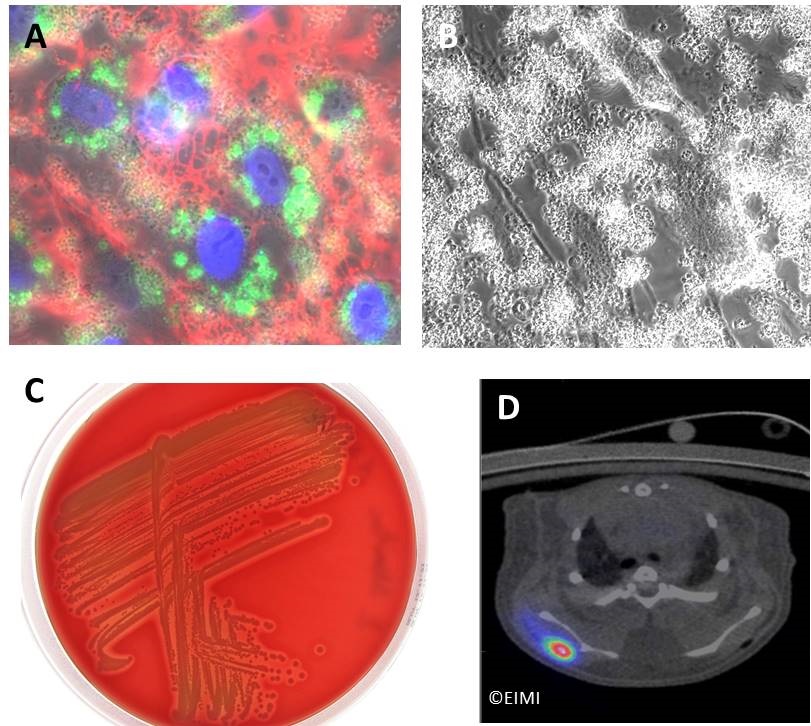Cellular microbiology

Our research group is working on various aspects of the pathogenesis of Staphylococcus aureus. This germ is a frequently harmless coloniser of the skin and mucous membranes, but can also acquire pathogenic significance. It is an extremely versatile pathogen and can cause severe infections such as endocarditis, osteomyelitis and pneumonia.
It has been known for some years that S.aureus can invade host cells such as epithelial and endothelial cells and osteoblasts, where on the one hand the pathogen is protected from the immune system, but on the other hand it can also destroy the cells from within and penetrate through the cells into deeper tissue layers. We are interested in the bacterial as well as the host cell factors that enable or block the invasion of the cells.
In a joint project with the AG Schaumburg, we are investigating the pathogenicity of S.schweitzeri, which is commonly found in African bats and monkeys but (so far) rarely transmitted to humans.
In collaboration with the European Institute for Molecular Imaging (EIMI), we are looking at how life-threatening bacterial infections can be visualised non-invasively in vivo. At this time, we are developing and validating specific imaging probes based on selective metabolic uptake of the bacteria. (Link)

